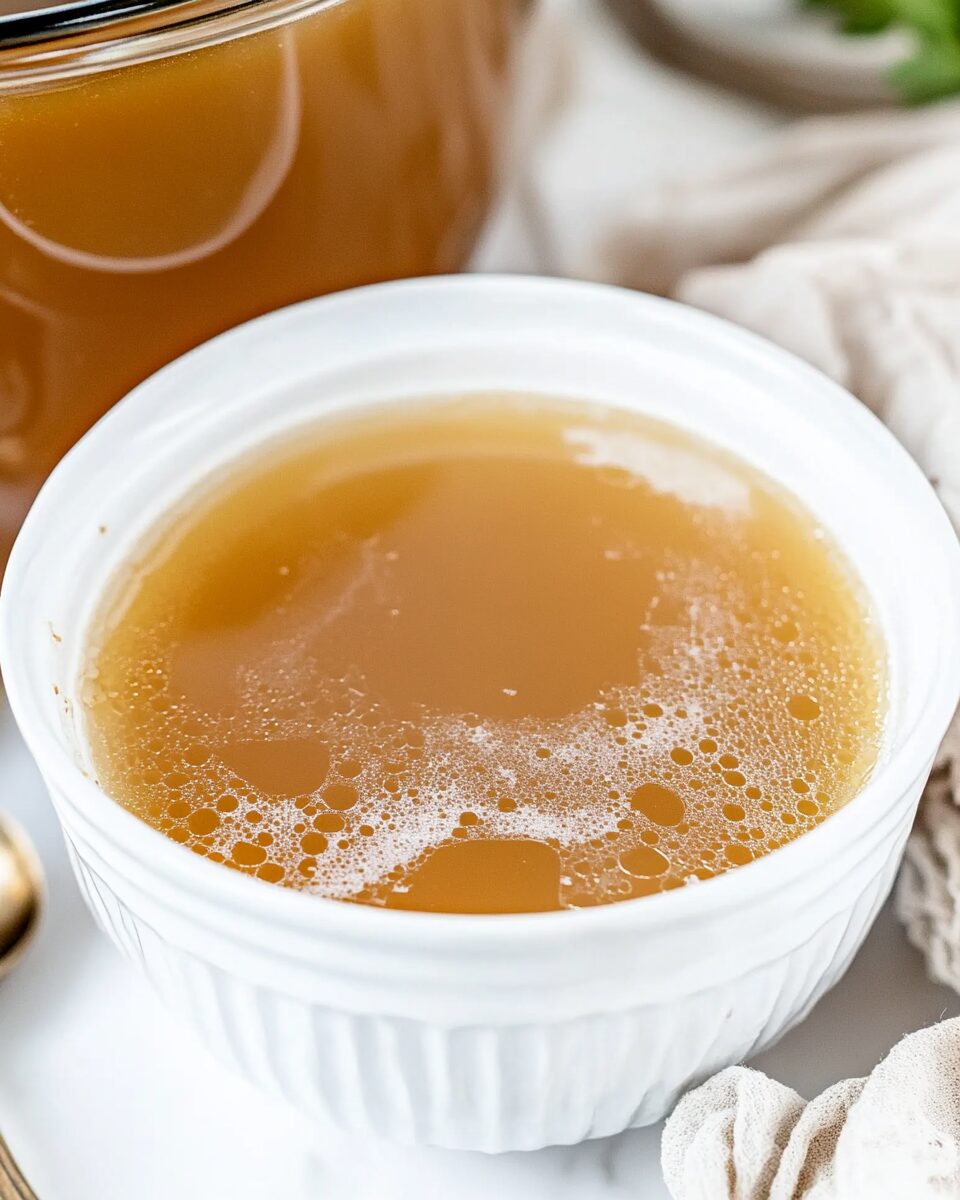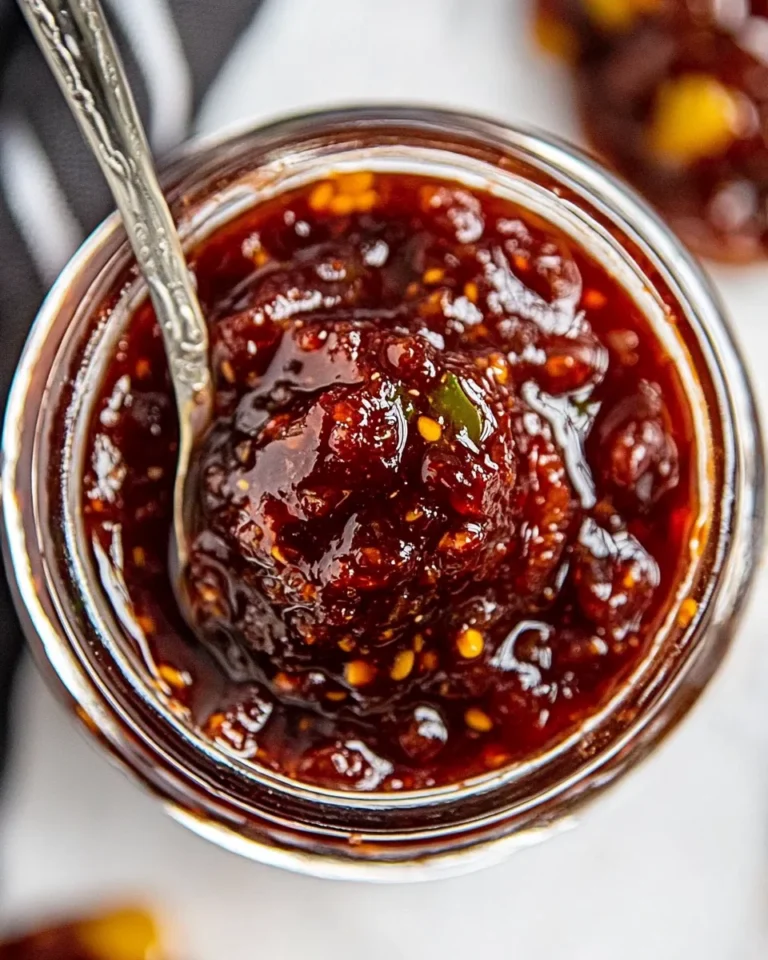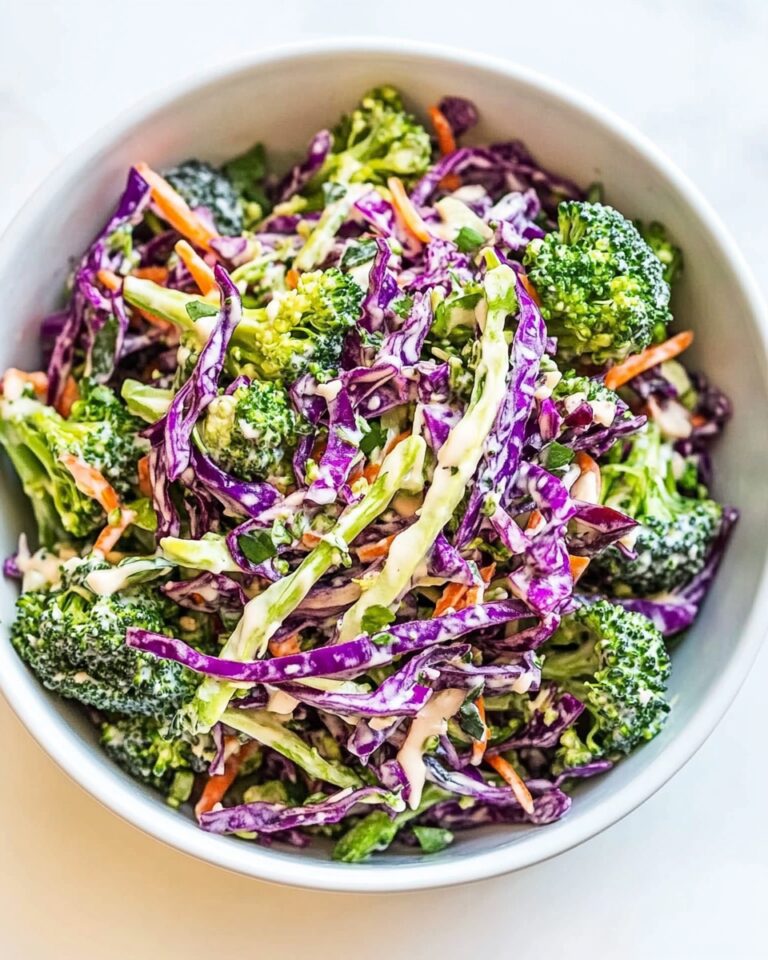How To Make Bone Broth
Bone broth is a culinary treasure that has stood the test of time, revered for its rich flavor and comforting qualities. It’s a staple in many kitchens, celebrated not only for its taste but also for its versatility in cooking. Imagine a simmering pot filled with the warmth of roasted bones, aromatic vegetables, and fragrant herbs, releasing a savory essence that fills the air. This liquid gold can be enjoyed on its own, used as a base for soups, or incorporated into various dishes, enhancing their depth and richness. Making bone broth from scratch is an experience that connects you to the art of cooking, allowing you to harness the full potential of ingredients that might otherwise go to waste. As you embark on this culinary journey, you will discover the joy of creating something nourishing and flavorful that is entirely homemade.
Why You’ll Love This Recipe?
This bone broth recipe stands out for several compelling reasons. Firstly, the taste is simply unparalleled. By using a variety of bones—whether beef, chicken, or even fish—you can create a broth that boasts a deep, complex flavor profile, perfect for sipping or incorporating into other dishes. Secondly, the preparation is incredibly easy. With just a few simple steps and minimal hands-on time, you can have a simmering pot of goodness that practically cooks itself. Once you add your ingredients, it’s just a matter of letting it simmer on the stove or in a slow cooker. Finally, the appearance of homemade bone broth is visually appealing. The rich, dark hue of the broth, combined with the flecks of herbs and vegetables, creates an inviting presentation that will have your guests eager to take a sip. Overall, this recipe offers a delightful combination of flavor, simplicity, and aesthetic appeal that will have you making bone broth regularly.
Ingredients:
Creating a wholesome pot of bone broth requires a handful of carefully selected ingredients. Here’s what you’ll need:
- Bone Selection (2-3 lbs): Choose a mix of bones for a richer flavor. Beef bones, including marrow bones and knuckle bones, provide a robust taste, while chicken bones, such as carcasses or wings, lend a lighter, more delicate flavor. Fish bones are also an option for a seafood broth.
- Vegetables (2 cups): Common choices are onions, carrots, and celery. One large onion, quartered, two medium carrots, chopped, and two stalks of celery, chopped, create a flavorful aromatic base. Feel free to experiment with garlic or leeks for added depth.
- Herbs and Seasonings: Use a bouquet of fresh herbs or dried options. Thyme, parsley, and bay leaves are traditional favorites. A few sprigs of fresh thyme, a couple of bay leaves, and a handful of parsley will enhance the broth’s flavor.
- Apple Cider Vinegar (2 tablespoons): This ingredient is essential for extracting minerals from the bones, enhancing the nutritional value of the broth.
- Water (enough to cover the bones): Use filtered water to avoid any unwanted flavors. The amount will depend on the size of your pot but generally ranges from 8 to 12 cups.
- Salt and Pepper: Adjust to taste; start with a teaspoon of salt and a few cracks of black pepper. You can always add more later.
These ingredients create a robust foundation for your bone broth, allowing for a variety of textures and flavors that will elevate your culinary creations. The combination of bones, vegetables, and herbs works harmoniously to produce a broth that is both nourishing and satisfying.
How To Make Bone Broth?
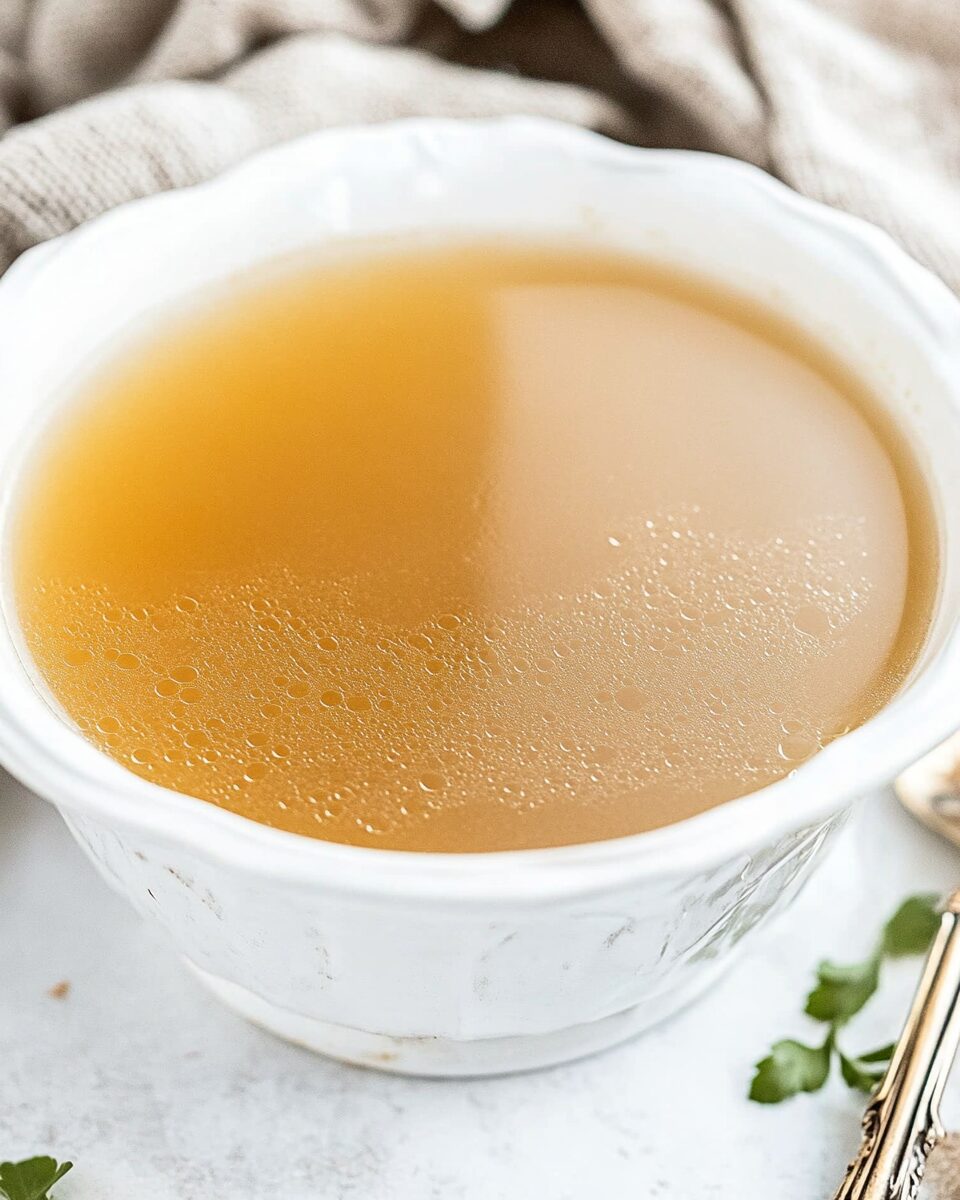
Making bone broth is a straightforward process that involves a few simple steps. Follow these detailed instructions to create your batch:
- Prepare the Bones: If you’re using raw bones, consider roasting them first to deepen the flavor. Preheat your oven to 400°F (200°C) and place the bones on a baking sheet. Roast for about 30-40 minutes until they are browned. This step is optional but highly recommended for a richer broth.
- Combine Ingredients: In a large stockpot or slow cooker, add the roasted (or raw) bones, chopped vegetables, herbs, and apple cider vinegar. The vinegar helps draw out nutrients from the bones, making your broth even more flavorful.
- Add Water: Pour in enough filtered water to cover the bones and vegetables completely. Leave some space at the top to avoid overflow during cooking.
- Bring to a Boil: Turn the heat to high and bring the pot to a boil. Once it reaches a boil, reduce the heat to low. This is the perfect time to skim off any foam or impurities that rise to the surface; this helps clarify your broth.
- Simmer: Allow the broth to simmer gently. For chicken bones, simmer for about 6-8 hours; for beef bones, aim for 12-24 hours. The longer the simmer, the more flavors and nutrients will be extracted from the bones.
- Check Occasionally: Throughout the cooking process, check on your broth. Add more water if it evaporates too much, and taste occasionally to adjust seasoning with salt and pepper.
- Strain the Broth: Once the broth is done simmering, use a fine-mesh strainer or cheesecloth to strain the liquid into another pot or large bowl, discarding the solids. This will leave you with a clear, rich broth.
- Cool and Store: Let the broth cool to room temperature before transferring it to containers. Store in the refrigerator for up to a week or freeze for longer storage. Bone broth can be stored in ice cube trays for convenient portioning.
Now you have a delicious, homemade bone broth ready to be used in your favorite recipes or enjoyed on its own. The process may take time, but the result is well worth the effort. You’ll find that the flavor and satisfaction of homemade broth far surpass anything store-bought.
Tips For Variations:
While the basic bone broth recipe is fantastic as is, here are some unique variations to elevate your broth experience:
- Herbal Infusions: Experiment with different herbs to create various flavor profiles. Adding rosemary, dill, or even a hint of sage can impart unique tastes. Fresh herbs will give a vibrant flavor, while dried herbs provide a more concentrated essence.
- Vegetable Variations: Consider incorporating other vegetables like mushrooms for an earthy depth, or sweet potatoes for a subtle sweetness. You can also add leafy greens like kale or spinach towards the end of cooking for added nutrition.
- Roasted Garlic: For a more pronounced flavor, roast a whole head of garlic alongside your bones. The caramelized garlic will add a sweet, rich note to the broth.
- Spices: Adding spices such as turmeric, ginger, or black peppercorns can enhance the broth’s complexity and add warmth. Just a few pieces will suffice to avoid overpowering the other flavors.
- Budget-Friendly Options: Utilize leftover bones and vegetable scraps. Save bones from previous meals and freeze them until you have enough for a batch. Similarly, vegetable trimmings like onion skins or carrot tops can be added to enhance flavor without extra cost.
- Fish Bone Broth: For a lighter alternative, make fish bone broth using bones from white fish. This broth cooks quicker, typically taking only 3-4 hours. It’s perfect for a delicate soup base.
- Acidity Adjustment: If you prefer a more acidic flavor, increase the amount of apple cider vinegar slightly. This will also help extract more nutrients from the bones.
These variations not only enhance the flavor and aroma of your bone broth but also allow you to personalize it according to your taste preferences or seasonal ingredients. Experimenting with different combinations can lead to exciting new discoveries in your cooking.
Serving Suggestions:
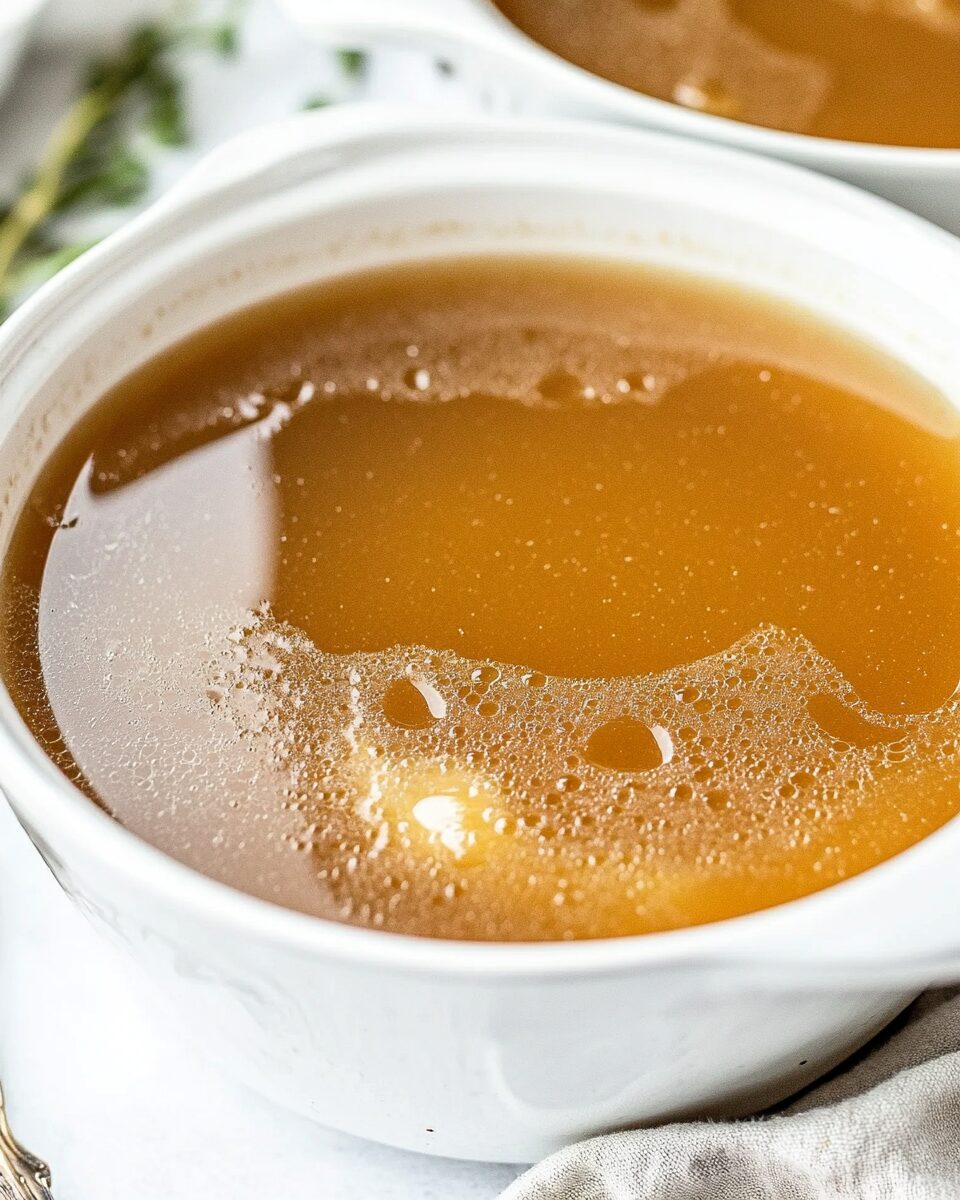
Bone broth can be enjoyed in a myriad of ways, making it a versatile addition to your culinary repertoire. Here are some creative serving suggestions:
- Simple Sipping Broth: Heat the strained broth in a saucepan, season with salt and pepper, and pour it into a mug for a warm and comforting drink. This is perfect for chilly days or as a nourishing afternoon pick-me-up.
- Soup Base: Use the bone broth as a base for soups. Add fresh vegetables, noodles, or grains like rice and quinoa for a hearty meal. Consider adding some shredded chicken or cooked beans for extra protein.
- Cooking Grains: Replace water with bone broth when cooking grains such as rice, quinoa, or couscous. This infuses the grains with flavor, making them a delicious side dish or base for salads.
- Stews and Sauces: Incorporate bone broth into stews and sauces for added richness. It can deepen the flavor of sauces, making them more complex and satisfying.
- Flavorful Risottos: Use bone broth instead of stock or plain water when making risottos. The depth of flavor will elevate this classic dish, making it even more indulgent.
- Freeze for Future Use: For convenience, freeze portions of bone broth in ice cube trays or freezer-safe containers. This way, you’ll have flavorful broth on hand whenever you need it.
- Bone Broth Ramen: Prepare a simple ramen dish using your homemade bone broth as a base. Add cooked noodles, soft-boiled eggs, and toppings like green onions and seaweed for a fulfilling meal.
These serving suggestions will not only enhance your meals but also allow you to explore the versatility of bone broth in various culinary applications. Enjoy the rich flavors and comforting warmth it brings to your dishes.
FAQ:
Can I use any type of bones for bone broth?
Yes, you can use various types of bones, including beef, chicken, or fish. Each type will impart a different flavor and richness to the broth.
How long does bone broth last in the fridge?
Homemade bone broth can last in the refrigerator for up to one week. For longer storage, consider freezing it in portions.
Can I make bone broth in a slow cooker?
Absolutely! A slow cooker is an excellent option for making bone broth. Just follow the same steps, setting it on low for 12-24 hours.
How do I know when the bone broth is done?
Bone broth is done when it has a rich, deep color, and the bones have released their collagen and nutrients. This can take anywhere from 6 to 24 hours, depending on the type of bones used.
Can I drink bone broth daily?
Many people enjoy bone broth regularly as part of their diet. It can be sipped alone or used as a base for meals, offering versatility in your cooking.

Homemade Bone Broth
Equipment
- Stockpot
- Strainer
- Baking Sheet
Ingredients
Bone Selection
- 2-3 lbs Mixed Bones (beef, chicken, or fish) Use a mix for richer flavor.
Vegetables
- 2 cups Chopped Vegetables (onions, carrots, celery) Common choices include 1 large onion, 2 medium carrots, and 2 stalks of celery.
Herbs and Seasonings
- 3 sprigs Fresh Thyme
- 2 leaves Bay Leaves
- 1 handful Fresh Parsley
Other Ingredients
- 2 tablespoons Apple Cider Vinegar Helps extract minerals from bones.
- 8-12 cups Filtered Water Enough to cover the bones.
- 1 teaspoon Salt Adjust to taste.
- to taste Black Pepper Adjust to taste.
Instructions
- Preheat your oven to 400°F (200°C) and roast the bones on a baking sheet for 30-40 minutes until browned.
- In a large stockpot or slow cooker, add the roasted bones, chopped vegetables, herbs, and apple cider vinegar.
- Pour in enough filtered water to cover the bones and vegetables completely.
- Bring the pot to a boil over high heat, then reduce the heat to low and skim off any foam that rises to the surface.
- Allow the broth to simmer gently for 12-24 hours, depending on the type of bones used.
- Check occasionally, adding more water if necessary, and taste to adjust seasoning.
- Once done, strain the broth using a fine-mesh strainer or cheesecloth into another pot or bowl, discarding the solids.
- Let the broth cool to room temperature before transferring it to containers for storage.

